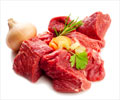Swine flu is caused by H1N1 influenza virus and is a respiratory disease. H1N1 virus transmits form an infected person to a healthy one like any other influenza virus.

‘Swine flu, also known as the H1N1 virus, is a relatively new strain of an influenza virus that causes symptoms similar to the regular flu. It originated in pigs but is spread primarily from person to person.’





On the basis of latest official figures, dated August 13, Maharashtra reported 409 deaths and 4,011 infections. The public health professionals are expecting that the numbers in both states are likely to rise. According to reports in 2015, Maharashtra had 8,538 swine flu cases and 903 deaths, while Gujarat had 7,180 cases and 517 deaths. The doctors, meanwhile, are advocating greater caution for the citizens including measures like avoiding crowded places as much as possible, wearing masks while using public transport facilities and getting vaccinated against the H1N1 virus. Swine flu is caused by H1N1 influenza virus and is a respiratory disease. Being a contagious disease, H1N1 virus transmits form an infected person to a healthy one like any other influenza virus through the modes of inhalation, ingestion, or through human touch. Swine flu patients are grouped in three categories.
Those who present with mild influenza symptoms fall in category A. They are advised to restrict themselves to home, and necessarily do not undergo testing for H1N1 virus. Category B includes those who show all the signs of swine flu and test positive for H1N1, and therefore are at high-risk. Mildly ill children, women who are pregnant, and people older than 65 years, especially if they have other health diseases, also fall in high-risk category. They are treated with 'Oseltamivir' and are advised home confinement. Those who have symptoms of category A and B and have to be hospitalised due to severe form of chest pain, breathlessness, and other symptoms fall in category C.
One should continue with best hygiene practices like washing hands before having food, and should also avoid close contact with influenza patients. It is also important to adopt hygiene practices when in public spaces:
Wear masks when in crowded place to avoid inhaling the infection.
Advertisement
Avoid touching your face or nose with unwashed hands, make sure you wash your hands after returning from a public place or using public transport.
Advertisement
Make sure you wear full sleeve clothing and limit skin exposure as much as possible.
Use mosquito nets at home and keep windows and doors closed to prevent mosquitoes from creeping in.
Source-ANI










